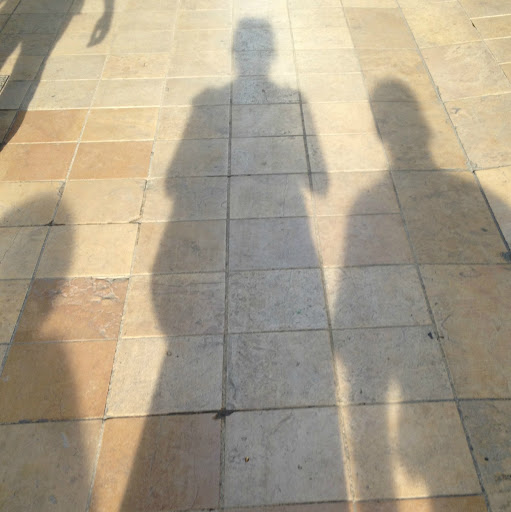Robyn M Reed
age ~37
from Tacoma, WA
- Also known as:
-
- Robyn Mae Schenk
- Robyn M Schenk
- Phone and address:
- 6418 10Th St, Tacoma, WA 98465
Robyn Reed Phones & Addresses
- 6418 10Th St, Tacoma, WA 98465
- Puyallup, WA
- Spanaway, WA
License Records
Robyn E Reed
License #:
5145373 - Expired
Category:
Health Care
Issued Date:
Dec 13, 1999
Effective Date:
Sep 6, 2007
Expiration Date:
Jul 31, 2005
Type:
Licensed Practical Nurse
Us Patents
-
Flux Fountain
view source -
US Patent:8564944, Oct 22, 2013
-
Filed:Oct 15, 2012
-
Appl. No.:13/651726
-
Inventors:Robyn Rebecca Reed McLaughlin - Seattle WA, US
Summer L. Schneider - Seattle WA, US
Eric Joseph Wahl - Kirkland WA, US
James H. Wise - Valparaiso IN, US
Camilo Leon - Redmond WA, US
Karsten Aagaard - Monroe WA, US
Thomas Charles Oliver - Windsor CO, US -
Assignee:Microsoft Corporation - Redmond WA
-
International Classification:G06F 1/16
-
US Classification:36167927, 36167917, 36167929, 335285, 16320
-
Abstract:Flux fountain techniques are described. In one or more implementations, an apparatus includes a cover configured to be disposed over at least a portion of a display device of a computing device that is configured as a tablet and a connection portion attached to the cover using a flexible hinge. The connection portion is configured to be physically coupled to the computing device using a magnetic coupling device. The magnetic coupling device includes a first magnet that is disposed in the connection portion such that a magnetic field is aligned along an axis and second and third magnets are disposed in the connection portion at opposing sides of the first magnet from each other. The second and third magnets have respective magnetic fields that are aligned along a respective axis that is substantially perpendicular to the axis of the magnetic field of the first magnet.
-
Flux Fountain
view source -
US Patent:20130229756, Sep 5, 2013
-
Filed:May 14, 2012
-
Appl. No.:13/471237
-
Inventors:Robyn Rebecca Reed McLaughlin - Seattle WA, US
Summer L. Schneider - Seattle WA, US
Eric Joseph Wahl - Kirkland WA, US
James H. Wise - Valparaiso IN, US
Camilo Leon - Redmond WA, US
Karsten Aagaard - Monroe WA, US
Thomas Charles Oliver - Windsor CO, US -
International Classification:G06F 1/16
-
US Classification:3616794, 220230
-
Abstract:Flux fountain techniques are described. In one or more implementations, an apparatus includes a cover configured to be disposed over at least a portion of a display device of a computing device that is configured as a tablet and a connection portion attached to the cover using a flexible hinge. The connection portion is configured to be physically coupled to the computing device using a magnetic coupling device. The magnetic coupling device includes a first magnet that is disposed in the connection portion such that a magnetic field is aligned along an axis and second and third magnets are disposed in the connection portion at opposing sides of the first magnet from each other. The second and third magnets have respective magnetic fields that are aligned along a respective axis that is substantially perpendicular to the axis of the magnetic field of the first magnet.
-
Peripheral Device Storage
view source -
US Patent:20130335903, Dec 19, 2013
-
Filed:Sep 5, 2012
-
Appl. No.:13/603918
-
Inventors:Jan Raken - Seattle WA, US
Andrew W. Hill - Redmond WA, US
Peter Kyriacou - Seattle WA, US
Robyn Rebecca Reed McLaughlin - Seattle WA, US -
International Classification:G06F 1/16
-
US Classification:3616794
-
Abstract:Peripheral device storage techniques are described. In one or more implementations, a computing device includes a housing and a power connection port that is configured to form a physical coupling to a peripheral device sufficient to retain the peripheral device against the housing and form an electrical coupling configured to receive power at the computing device from a power adapter.
-
Computing Device With Stylus Retention
view source -
US Patent:20230067384, Mar 2, 2023
-
Filed:Oct 19, 2021
-
Appl. No.:17/451444
-
Inventors:- Redmond WA, US
Robyn Rebecca Reed MCLAUGHLIN - Seattle WA, US
Kaitlyn Marley SCHOECK - Seattle WA, US
Aseem SINGLA - Redmond WA, US
Joseph Benjamin GAULT - West Linn OR, US -
Assignee:Microsoft Technology Licensing, LLC - Redmond WA
-
International Classification:G06F 1/16
-
Abstract:A computing device comprises a base that comprises a base surface configured to support the computing device on a supporting surface, and a front wall adjoining and extending away from the base surface. The computing device also includes a chassis adjoining the base, the chassis comprising a planar user interactive surface comprising one or more user input components. The chassis also comprises an overhanging brim that extends beyond at least the front wall of the base and comprises at least one magnet configured to removably retain a stylus underneath the overhanging brim.
-
Systems And Methods For Illuminated Logo Movement
view source -
US Patent:20230033752, Feb 2, 2023
-
Filed:Dec 4, 2020
-
Appl. No.:17/782538
-
Inventors:- Redmond WA, US
Robyn Rebecca Reed MCLAUGHLIN - Seattle WA, US
Casey Cook ZELIG - Seattle WA, US
Siyuan MA - Seattle WA, US
Sang Ho YOON - Redmond WA, US
Shantanu Yadunath THAKURDESAI - Denton, WA -
International Classification:G06F 1/16
-
Abstract:A method of selectively illuminating part of an electronic device includes obtaining a posture status of a hinge supporting a display cover relative to a base of the electronic device and illuminating an optical module positioned on an outer surface of the electronic device based on the hinge position of the posture status.
-
Enclosure Thermal Short
view source -
US Patent:20190269037, Aug 29, 2019
-
Filed:Jan 28, 2019
-
Appl. No.:16/259462
-
Inventors:- Redmond WA, US
Robyn Rebecca Reed McLaughlin - Seattle WA, US
James Michael Bonicatto - Seattle WA, US
Kenneth Charles Boman - Duvall WA, US
Jeffrey Taylor Stellman - Seattle WA, US
Avi Pinchas Hecht - Mountain View CA, US -
International Classification:H05K 7/20
-
Abstract:A computing device includes a housing having an inner surface, a first outer surface, a second outer surface, and a side extending between the first outer surface and the second outer surface. The computing device also includes a heat generating electronic device, a first heat spreader, and a second heat spreader. At least a portion of the first heat spreader abuts or is adjacent to the inner surface of the housing. The second heat spreader extends from a first position within the housing, at or adjacent to the heat generating electronic device to a second position within the housing. The second position is closer to the side of the housing than the first position. A first portion of the second heat spreader abuts the first heat spreader, and a second portion of the second heat spreader is at a distance from the first heat spreader.
-
Flux Fountain
view source -
US Patent:20140362506, Dec 11, 2014
-
Filed:Aug 12, 2014
-
Appl. No.:14/457881
-
Inventors:- Redmond WA, US
Robyn Rebecca Reed McLaughlin - Seattle WA, US
Summer L. Schneider - Portland OR, US
Eric Joseph Wahl - Kirkland WA, US
James H. Wise - Valparaiso IN, US
Camilo Leon - Redmond WA, US
Karsten Aagaard - Monroe WA, US
Thomas Charles Oliver - Windsor CO, US -
International Classification:G06F 1/16
-
US Classification:36167908, 220230
-
Abstract:Flux fountain techniques are described. In one or more implementations, an apparatus includes a cover configured to be disposed over at least a portion of a display device of a computing device that is configured as a tablet and a connection portion attached to the cover using a flexible hinge. The connection portion is configured to be physically coupled to the computing device using a magnetic coupling device. The magnetic coupling device includes a first magnet that is disposed in the connection portion such that a magnetic field is aligned along an axis and second and third magnets are disposed in the connection portion at opposing sides of the first magnet from each other. The second and third magnets have respective magnetic fields that are aligned along a respective axis that is substantially perpendicular to the axis of the magnetic field of the first magnet.
-
Electrical Contacts And Connectors
view source -
US Patent:20140132550, May 15, 2014
-
Filed:Jan 23, 2014
-
Appl. No.:14/162529
-
Inventors:- Redmond WA, US
Robyn Rebecca Reed McLaughlin - Seattle WA, US
Anthony Ernest Hillyerd - Sammamish WA, US
Summer L. Schneider - Portland OR, US
Duane Martin Evans - Snohomish WA, US
Yazan Aldehayyat - Seattle WA, US
Brian David Bitz - Sherwood OR, US
David Paul Platt - North Bend WA, US
Gene Robert Obie - Clinton WA, US -
Assignee:Microsoft Corporation - Redmond WA
-
International Classification:G06F 1/18
-
US Classification:345173
-
Abstract:Electrical contact and connector techniques are described. In one or more implementations, a computing system includes a computing device and an input device that are configured to be physically and communicatively coupled using a projection that is configured to be disposed within a channel, communication contacts that are configured to contact contacts within the channel to support the communicative coupling; and a protrusion disposed on the projection, the protrusion configured to be received within a cavity formed as part of the channel. The protrusion includes an electrical contact that is configured to be self-cleaning due to movement of the protrusion in relation to the cavity and is configured to transfer power between the input device and the computing device.
Medicine Doctors

Robyn Cathleen Reed
view sourceSpecialties:
Pathology
Anatomic Pathology & Clinical Pathology
Clinical Pathology/Laboratory Medicine
Anatomic Pathology & Clinical Pathology
Clinical Pathology/Laboratory Medicine
Education:
Duke University(2004)

Robyn Rex Reed
view source
Red Robyn Reed
view source
Robyn Reed
view source
Robyn Moinette Reed
view source
Robyn Renee Reed
view source
Robyn Reed Badeau
view source
Robyn Edler Reed
view source
Robyn Reed
view sourceFlickr
Myspace
Googleplus

Robyn Reed
Education:
California State University, Northridge - Child development
Relationship:
Single

Robyn Reed

Robyn Reed

Robyn Reed

Robyn Reed

Robyn Reed

Robyn Reed

Robyn Reed
Youtube
Classmates

Robyn Reed-heaton (Reed)
view sourceSchools:
Kearney High School Kearney NE 1972-1976
Community:
Barbara Dunbar, Bruce Meyer, Jon Whittaker, Lisa Eley
Biography:
This is all new to me....we only had one computer in the building when we were senio...

Robyn Pyner (Reed)
view sourceSchools:
West Springfield High School Springfield VA 1970-1974
Community:
Frank Mulkey, Wendy Hill, Barbara Bayles, Judy Shutack

Robyn Reynolds (Reed)
view sourceSchools:
Millry High School Millry AL 1976-1980
Community:
John Walker

Robyn Clark (Reed)
view sourceSchools:
Southmont High School Crawfordsville IN 1977-1981
Community:
Kristy King, Jo Rice, Mark Smith, Joanna Magginnis

Robyn Reed
view sourceSchools:
Lee Junior High School San Angelo TX 1990-1992
Community:
Kerry Tonne

Robyn Reed
view sourceSchools:
Mclane High School Fresno CA 1973-1977
Community:
Sarah Scott, Charles Chuck

Robyn Reed (McCann)
view sourceSchools:
Buckeye High School Deville LA 1982-1986
Community:
Michael Mcneely, Latisha White

Robyn Reed
view sourceSchools:
Cowpens High School Cowpens SC 1991-1995
Community:
Nancy Whitworth, E.j. Starnes
Get Report for Robyn M Reed from Tacoma, WA, age ~37













